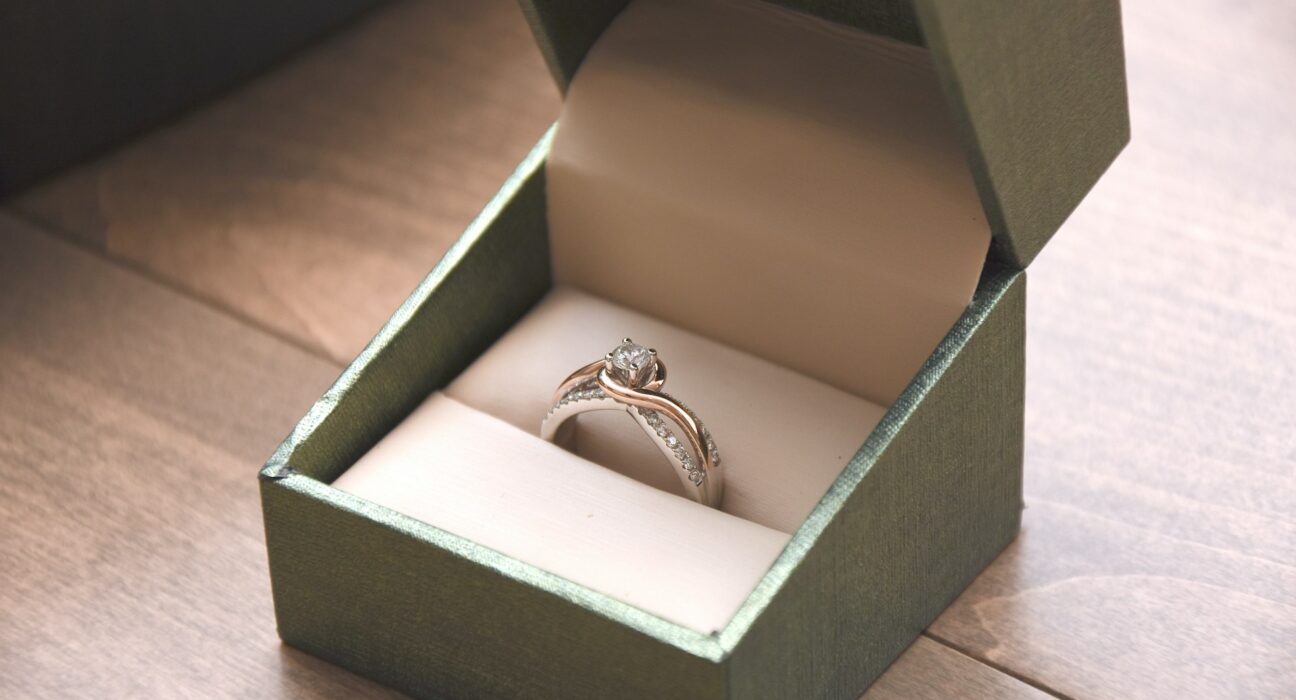When it comes to proposing, few decisions are as personal or significant as choosing the engagement ring. But with endless styles, cuts, and materials available, making the right choice can feel overwhelming. How do you find the perfect symbol of your love?
This guide walks you through the essential steps to choose an engagement ring that’s not only stunning but also meaningful. From understanding different diamond cuts to setting a budget and researching metal types, you’ll find all the ring shopping tips you need to make an informed decision.
Understand the Four Cs of Diamonds
If you’re considering a diamond engagement ring, understanding the “Four Cs” is essential. These factors determine the quality, appearance, and cost of your diamond.
Cut
The cut greatly influences a diamond’s sparkle and brilliance. A well-cut diamond reflects light beautifully, enhancing its radiance. Opt for cuts like round, oval, or princess if you want maximum sparkle. Fancy cuts such as emerald or pear offer distinctive charm.
Pro Tip: A well-cut diamond can make lower-carat weights appear larger. When shopping, prioritize cut quality over carat size for better overall impact.
Carat
Carat refers to the weight of the diamond, not its size. While larger diamonds make a bold statement, smaller stones can be equally stunning in the right setting.
Clarity
Clarity reflects the number of flaws or inclusions visible within the diamond. Choose a clarity grade based on your preferences, but remember that many inclusions are microscopic and unnoticeable to the eye.
Color
Diamonds are graded on a scale from D (colorless) to Z (light yellow or brown). Colorless diamonds are traditionally more desirable, but near-colorless diamonds can look stunning and cost less.
Determine a Budget
Establishing a budget early in the process will help you narrow your options and avoid overspending. The myth of spending “three months’ salary” on a ring is outdated. Instead, focus on getting the best value within your means.
Here are some tips to maximize your budget when shopping for engagement rings:
- Consider diamonds slightly below “milestone weights,” like 0.9 carats instead of a full 1.
- Choose a diamond with a slightly lower color or clarity that still looks exceptional to the naked eye.
Choose a Ring Metal
The metal of the engagement ring is just as important as the diamond it frames. Popular metal options include:
- Platinum: Known for its durability, it’s hypoallergenic and retains its luster over time.
- White Gold: Offers a sleek look similar to platinum but at a lower cost. However, it may require periodic replating.
- Yellow Gold: A classic choice that evokes warmth and tradition.
- Rose Gold: Trendy and romantic, rose gold is a modern favorite.
Quick Tip: Consider your partner’s skin tone and existing jewelry style when selecting the ring’s metal.
Think About Your Partner’s Style
An engagement ring is ultimately a gift for your partner, so their style should be a guiding factor. Observe the jewelry they wear daily. Is it minimalistic and modern, or do they prefer elaborate, vintage-inspired designs?
Here are some clues to match their unique personality to a ring design:
- Classic Elegance: Solitaire diamonds or three-stone settings.
- Trendy and Bold: Halo settings or colored gemstones, such as sapphires or emeralds.
- Vintage Charm: Intricate details like filigree designs or milgrain edges.
If you’re unsure, consider asking their close friends for input or browsing Pinterest boards they might have created.
Explore Alternative Gemstones
Diamonds are traditional, but they’re not the only option for engagement rings. Gemstones such as sapphires, rubies, or moissanites offer unique beauty at a lower price point.
- Sapphires: Durable and available in a variety of gorgeous hues, including blue and pink.
- Emeralds: Stunning but prone to scratches due to their softer composition.
- Moissanites: A sparkling, budget-friendly, and eco-conscious alternative to diamonds.
Alternative gemstones also symbolize individuality and are perfect for couples seeking something meaningful and unconventional.
Don’t Forget the Ring Setting
A diamond’s setting affects its security, appearance, and overall design. Choose a setting that complements the gemstone while suiting your partner’s lifestyle.
Prong
Prong settings use small metal claws to secure the stone. They showcase the diamond prominently and allow light to enter from all angles.
Bezel
This setting features a metal rim surrounding the stone for durability and a sleek, modern look. Ideal for active individuals, as it protects the diamond from potential damage.
Halo
A halo setting encircles the center stone with smaller diamonds, maximizing sparkle and creating the illusion of a larger centerpiece.
Pavé
Pavé settings add small diamonds along the band, elevating elegance without overshadowing the main stone.
Take the Next Steps
The perfect engagement ring is a blend of beauty, quality, and meaning. By understanding the Four Cs, selecting a suitable budget, and considering your partner’s style, you can create a symbol of love that they’ll cherish forever.
Still feeling unsure? Visit our comprehensive diamond guide to learn more or browse our expertly curated selection of engagement rings. If you’re ready to make the next step, take advantage of our personalized consultation services and get professional ring shopping tips tailored to your needs.







